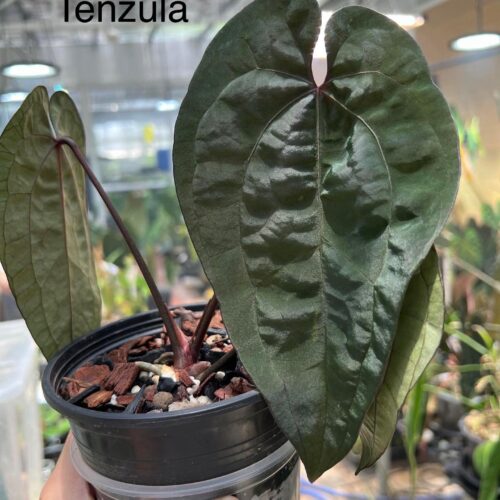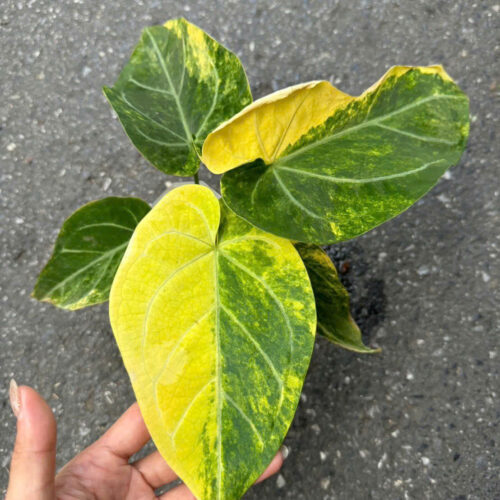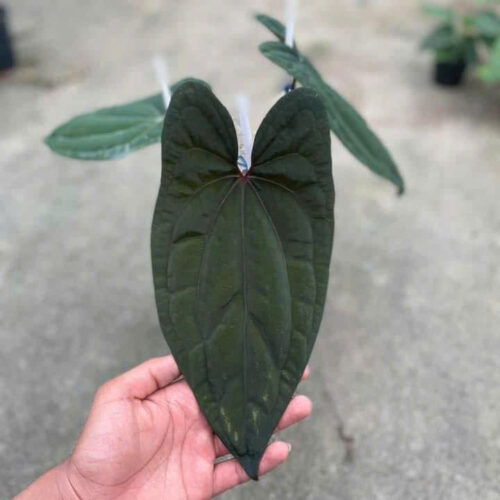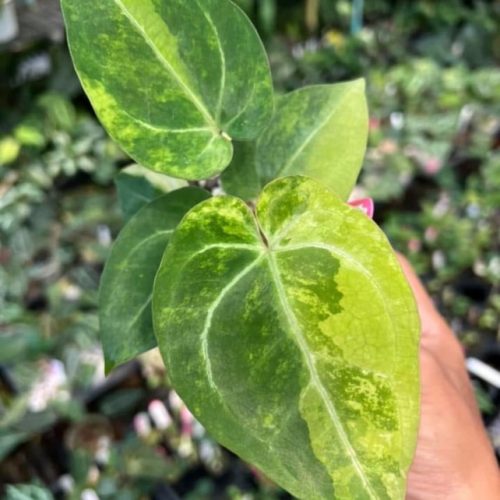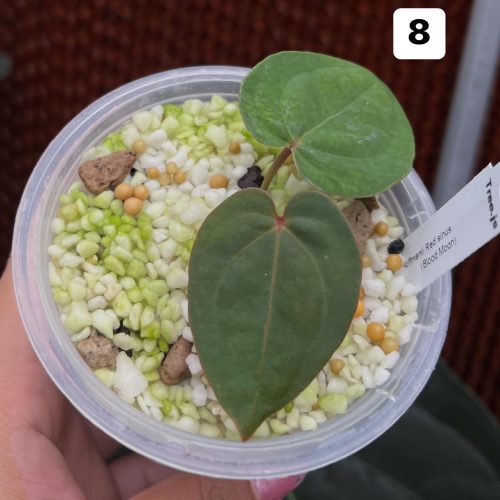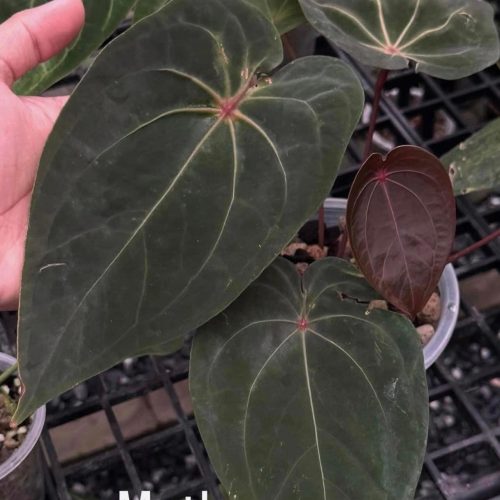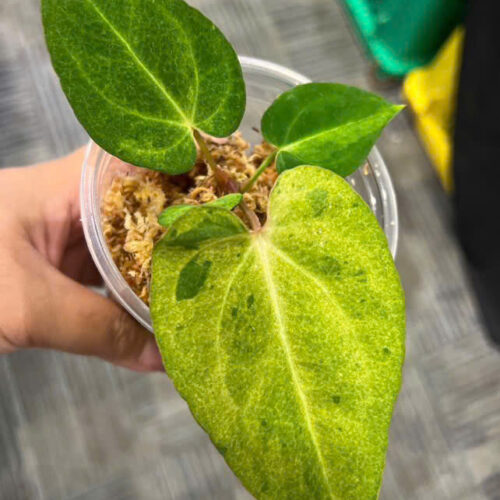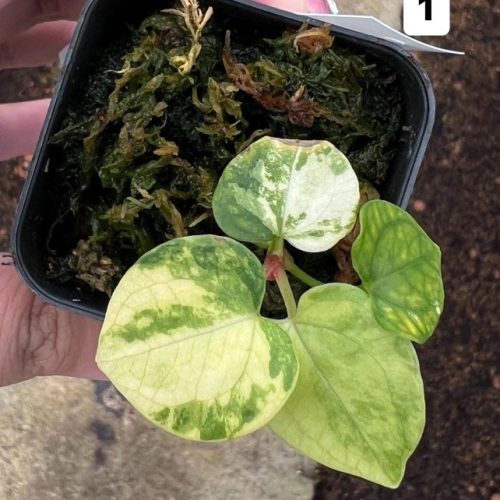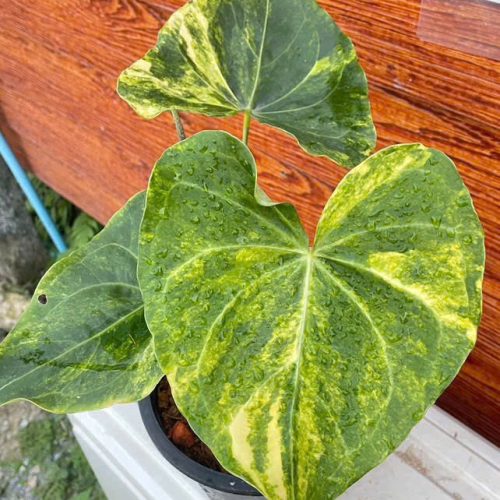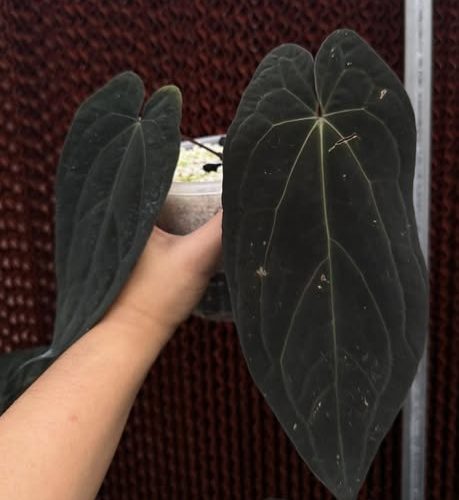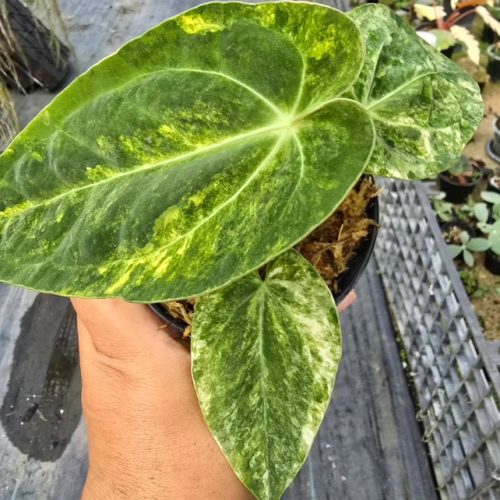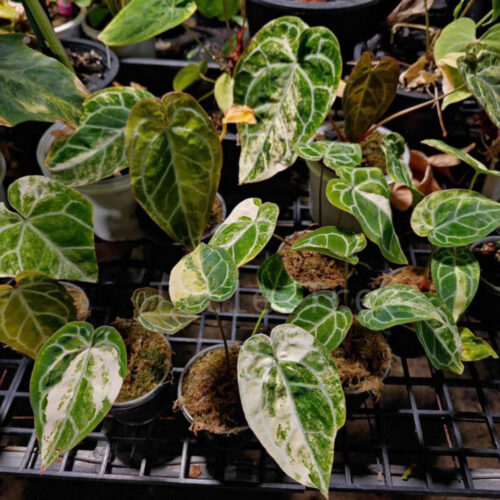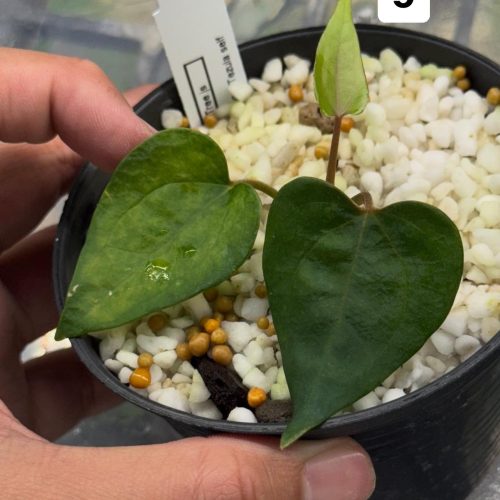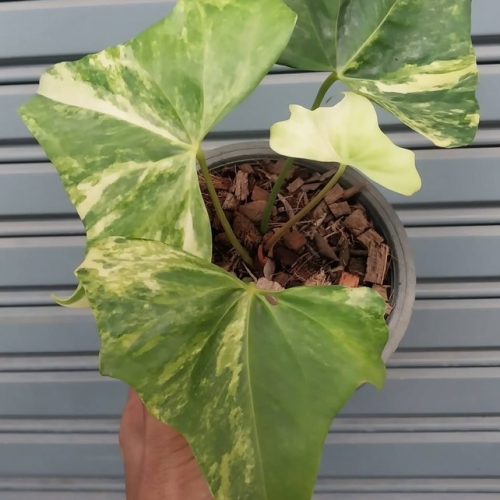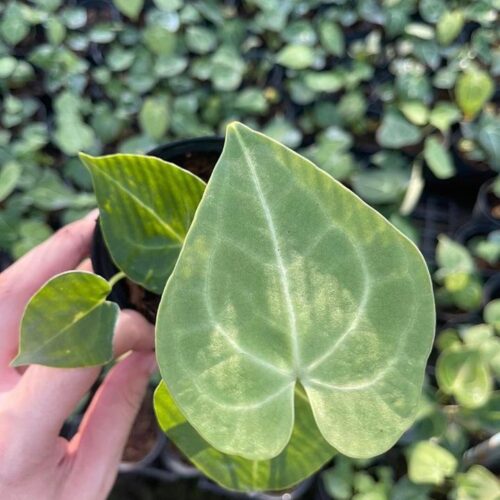Anthurium renaissance is a stunning tropical plant known for its beautifully variegated leaves. This rare anthurium variety is an exciting addition for indoor gardeners looking to add unique foliage to their plant collection. In this in-depth guide, we’ll cover everything you need to know about growing and caring for this magnificent houseplant.
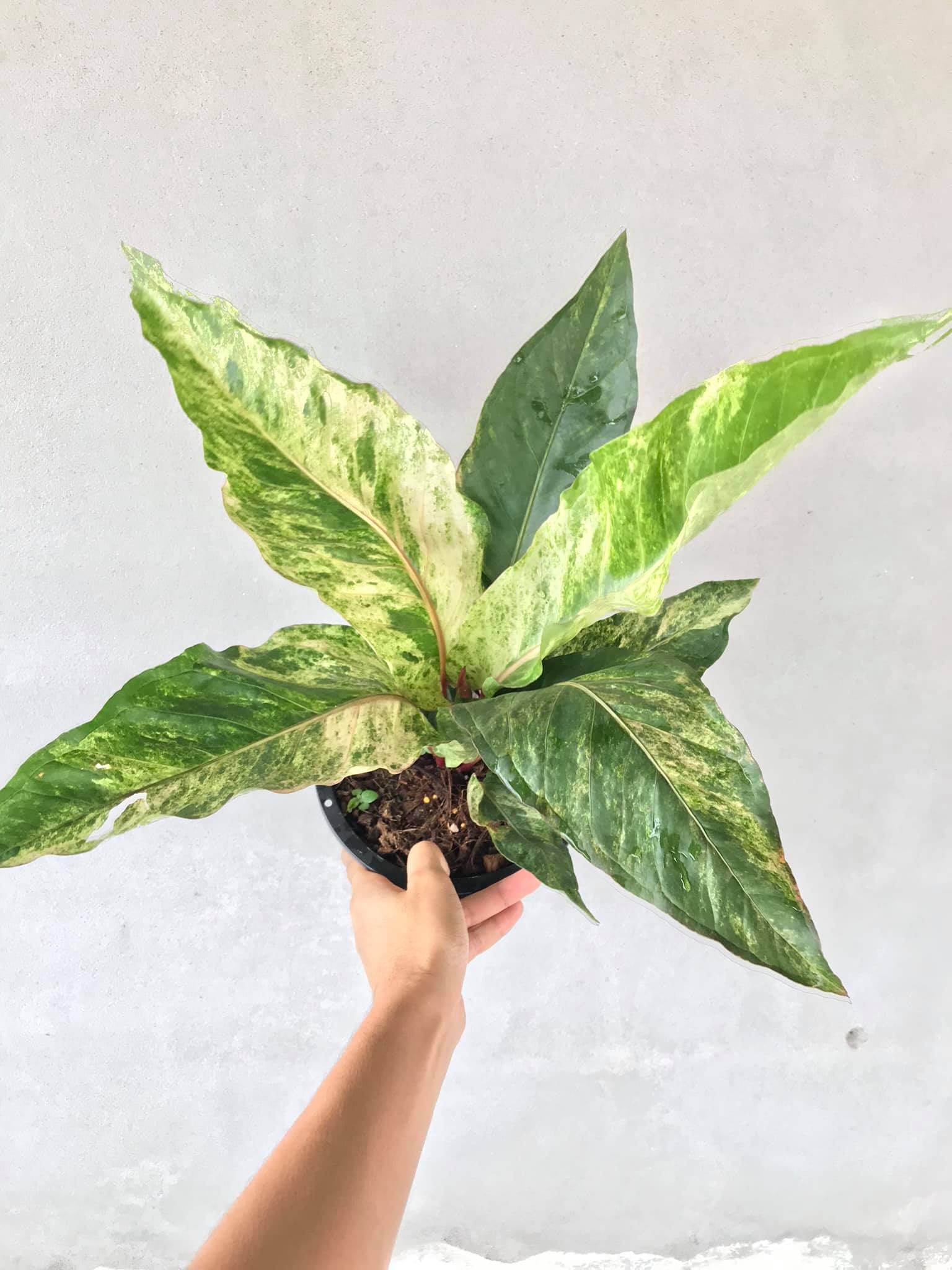
Overview of Anthurium renaissance
Anthurium renaissance features oval-shaped leaves with a striking white and green variegation pattern. The leaves emerge in a lovely shade of pink but mature to a dark green background with bright white veining and splotches. This contrast makes the foliage appear as if it’s been painted by an artist.
Unlike its flowering cousins, Anthurium renaissance is grown solely for its spectacular leaves rather than flowers. Its foliage remains the star attraction throughout the year. The plant has an upright, bushy growth habit and does best in bright, indirect light conditions. Anthurium renaissance brings a touch of the tropics indoors with its exotic look.
“Learn more about the care and maintenance of diverse anthurium species”
Growing Conditions
Light Requirements
- Anthurium renaissance thrives best in bright, filtered light. Place it near an east-, west-, or north-facing window where it receives plenty of indirect sunshine.
- Direct hot sunlight will scorch and fade the leaves. Sheer curtains can help filter intense afternoon sun from a south-facing window.
- Low light causes poor variegation and smaller growth. Supplement with a grow light if ambient light is not sufficient in your home.
Watering and Humidity
- Water thoroughly when the top few inches become slightly dry, allowing excess moisture to drain away.
- The soil should be kept consistently moist but not soggy wet. Extended dry spells cause leaf browning.
- Average room humidity is sufficient. Mist occasionally to boost moisture if needed.
- Yellowing lower leaves often indicate overwatering. Allow the soil to dry further between waterings.
Temperature
- Anthurium renaissance prefers average room temperatures between 60°F-80°F.
- Keep away from cold drafts from windows or doors which can damage leaves.
- Brief exposures to temperatures above 90°F are fine but prolonged heat causes stress.
Potting Mix
- Use a well-draining potting mix amended with perlite, orchid bark.
- Avoid standard potting soils which stay too wet. Anthuriums are sensitive to overly wet roots.
- Adding a little peat or coco coir helps retain some helpful moisture in the mix.
To understand the optimal growing conditions and care for varieties like Anthurium renaissance, explore our detailed guide on thriving anthuriums.
Care and Maintenance
Fertilizer
- Feed every 2-4 weeks during the growing season with a balanced liquid fertilizer diluted to half-strength.
- Reduce application in winter when light levels and growth slows.
- Excess fertilizer can burn roots and lead to brown leaf margins.
Pruning
- Remove any damaged, diseased, or dead leaves at the base of the plant.
- Pruning is not necessary but can be done to maintain size or shape.
- New leaves emerge from the central crown so avoid cutting main stems.
Propagation
- Propagate by division when the plant gets overcrowded, typically every few years.
- Carefully separate basal shoots with roots attached and repot into fresh potting mix.
- The plant also produces plantlets on older flower spathes which can be detached and potted up once roots form.
For those interested in propagating and cultivating such unique foliage plants, discover the effective propagation methods for anthuriums in our comprehensive guide.
Repotting
- Repot every 2-3 years in spring as needed when roots have filled out the container.
- Move to a pot one size larger with drainage holes and fresh potting mix.
- Take care not to damage roots which can stunt growth after repotting.
Common Issues
- Leaf tip burn – Caused by excess fertilizer or minerals in tap water. flush soil to remove buildup.
- Leaf spots/blemishes – Can indicate bacterial or fungal disease. Improve air circulation and remove affected foliage.
- Leaf curl – Result of too little humidity. Increase humidity level around the plant.
- Yellowing lower leaves – Often a sign of overwatering. Allow soil to dry further between waterings.

Where to buy Anthurium renaissance variegated? Benefits from importing plants from Thailand
- Shipping: Door to door shipping, fast and safe with Dragon Courier
- Biodiversity: Thailand is known for its rich biodiversity, including a wide variety of aroid species. This diversity allows importers to access a broad range of unique and exotic aroid plants.
- Quality and Health of Plants: The suitable climate helps the plants grown here stay healthy and of high quality.
- Cost-Effectiveness: Due to favorable growing conditions and efficient production methods, Thai aroid plants can often be more cost-effective compared to those from other countries.
- Access to Hybrid Varieties: Thai growers are often involved in the development of new hybrid aroid varieties, offering unique plants that may not be available from other sources.
Anthurium species are the most sought after by aroid plant lovers
Varieties to Try
Anthurium crystallinum
Grown for its velvety round leaves with reflective silver markings. Requires very bright light to maintain the crystallized pattern on its foliage.
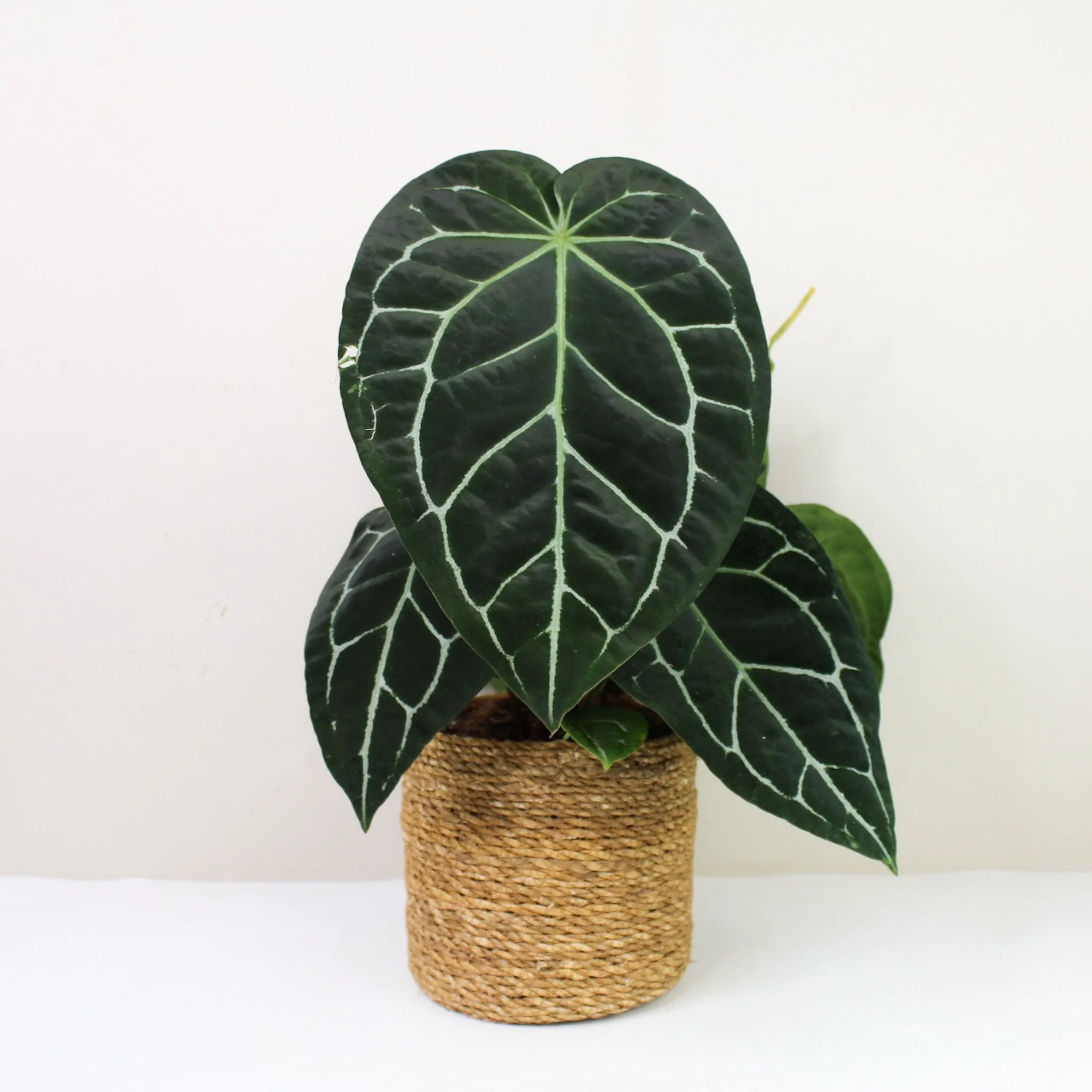
Anthurium clarinervium
Features gorgeous dark green, heart-shaped leaves with prominent white veining. Slower growing but easier to care for and quite hardy.

Anthurium papillilaminum
A rare collector’s variety with textured, puckered leaves edged in red when young. The foliage matures to dark green with striking white veins.

Anthurium luxurians
Noted for extra large, deeply lobed foliage that emerges in a stunning pink-purple color before darkening to green. The shimmery leaves can reach over three feet long!
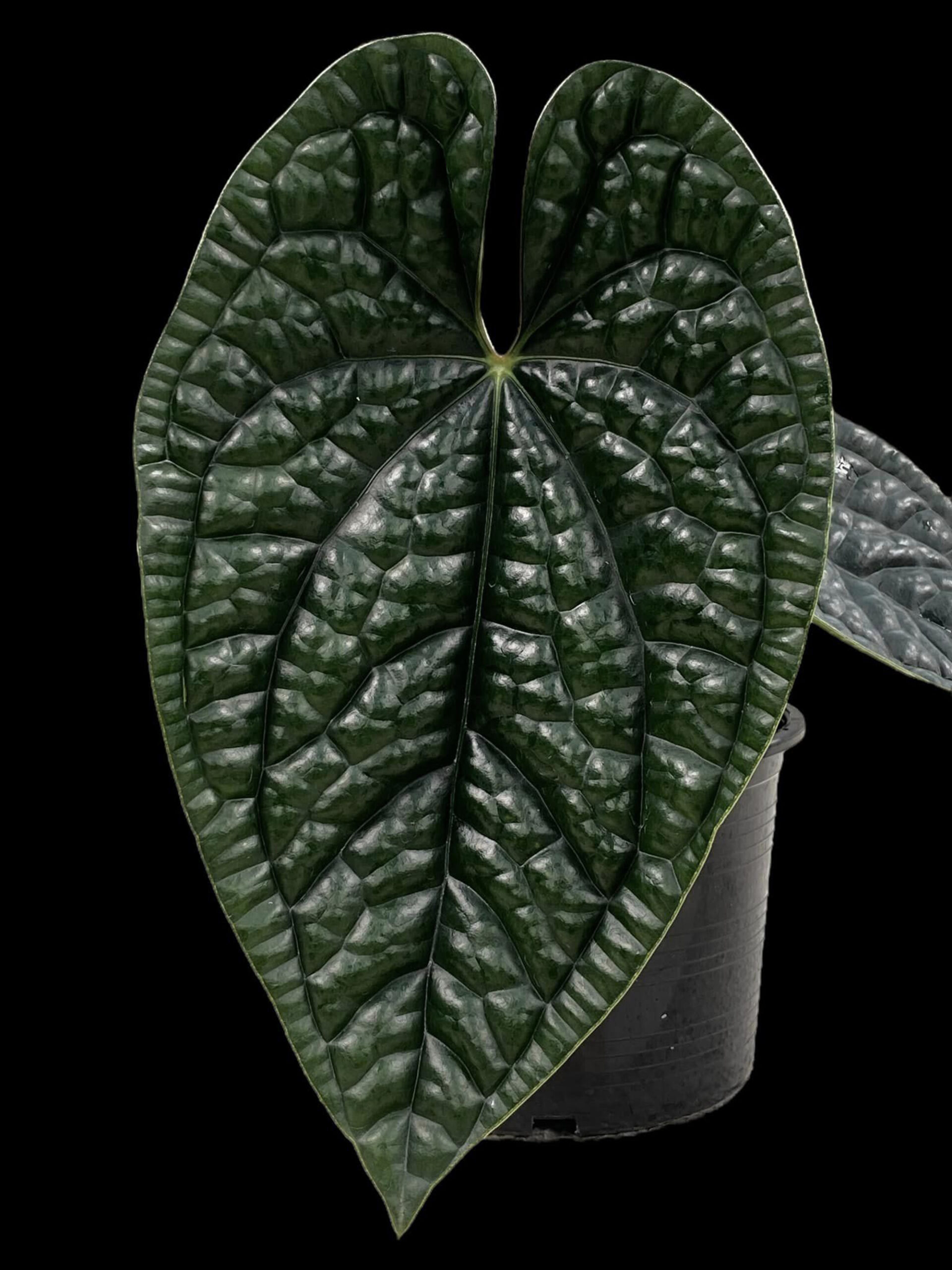
The Allure of Variegated Tropical Foliage
Anthurium renaissance and other members of the anthurium family highlight the intense demand for rare, variegated houseplants. The striking foliage patterning is a genetic mutation that causes a lack of chlorophyll production in some areas of the leaf surface. These sections appear white, yellow, or pink depending on pigmentation.
The instability causing these charming changes is challenging for the plant to reproduce consistently. This makes exotic variegated varieties difficult to propagate and much slower to produce in mass quantities, leading to high prices from collectors seeking these uncommon gems. Their rarity and flawless beauty creates an air of luxury that draws plant fanatics and decor-lovers to add them to their collections.
The allure of owning rare tropicals like Anthurium renaissance as statement houseplants has grown even stronger with the rise of social media and influencer culture. Unique plants make for envy-inducing Instagram posts! Additionally, the ability to appreciate stunning leaf designs and textures without flowers caters perfectly to small space urban gardening. Anthurium renaissance’s lush yet compact size allows it to be tastefully incorporated into nearly any living space.
Conclusion
With its beautifully painted leaves and tropical vibes, Anthurium renaissance is sure to become your new favorite houseplant! This exotic variegated variety is a true collector’s item for foliage enthusiasts. Although it requires bright, indirect light and consistent moisture, Anthurium renaissance is less demanding than some of its flowering cousins. Provide the basic care outlined above, and this vision of artistically patterned perfection will thrive indoors to adorn your home. Just be prepared for many envious comments from plant-loving friends!

